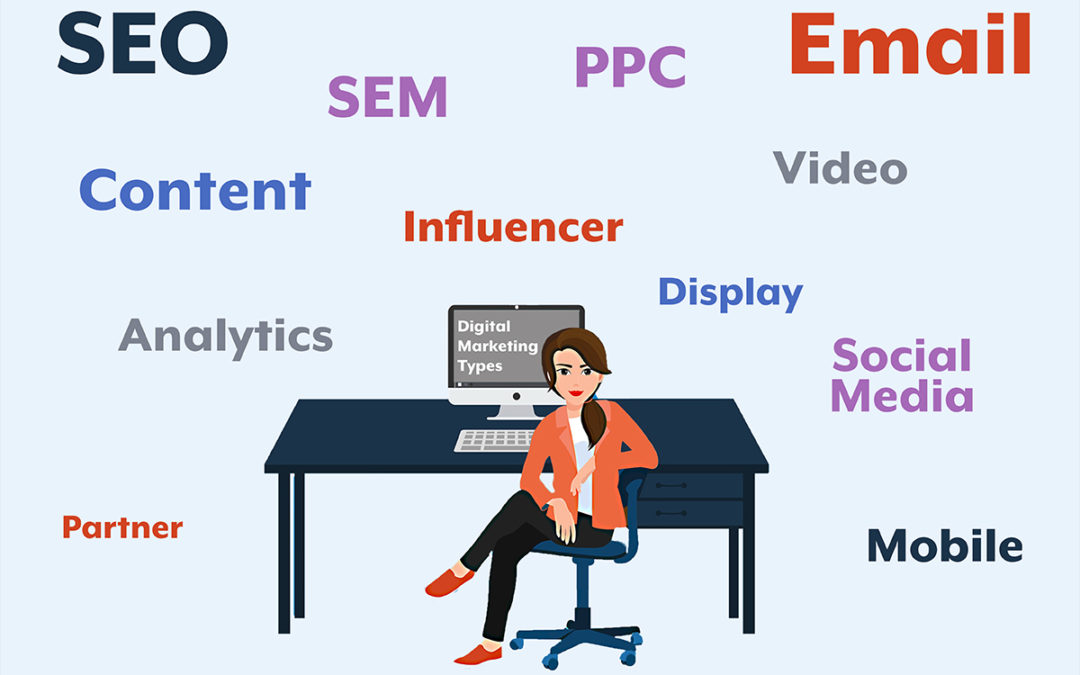Just about everyone has a website. You want your customers and potential customers, your audience, to find your home on the web. Digital Marketing allows you to reach your audience and drive them to your website through several types of marketing. Search Engine Optimization (SEO), Content Marketing, Video Marketing, Email Marketing, Mobile Marketing, and Search Engine Marketing (SEM), both Pay Per Click (PPC) and Display Ads. Digital marketing is also social marketing, not limited to Social Media Marketing. It also includes Influencer Marketing and Strategic Partnering with other groups that support your targeted demographic.
As reported by the U.S. Department of Commerce data, e-commerce continues to grow quarterly, with about 20% of every retail purchase made online. The most significant gains were in 2020, up 53.4% in the second quarter. Slightly smaller increases in 2021, up 15.4% in the second quarter. The first half of 2022 has also been up, with the first quarter up 6.7% and the second quarter up 7.3%. Although the gains are smaller, they’re still significant in showing growth each quarter.
As you can see, e-commerce has continued to grow each year over the past ten years. Many components of online marketing result in lead generation and converting leads into customers. A good understanding of SEO and Marketing Analytics helps shape your marketing plan to target your audience and pivot your strategy as needed. A significant advantage of digital marketing is that it is much more economical than commercial advertising.
Start with Keywords.
Relevant keywords are essential for guiding the creation of compelling content that is relevant to your business. It needs to answer the questions that your customers or visitors you hope to turn into customers begin their online search for a product or service that fills their needs or solves a problem.
Early in the days of SEO, digital marketers added as many keywords as possible. Since then, SEO criteria have changed many times, becoming closer to natural speech. With Google’s latest SEO update, which affects Search Engine Results Pages (SERP), whether your website will land on page one or four is critical. Because somewhere between 15% and 25% of users don’t click on page two of Google, new customers are unlikely to find you if you aren’t on page one.
Define Your Audience.
Create a strong buyer persona of your potential customers to keep your message clear. Build this on information about your top customers. Include as much information as you can. You can add other personas in time, but if you have too many and believe you can market to everyone, your potential customers will not hear your message.
Where do you start with your Digital Marketing Plan?
According to HubSpot, there are four steps for generating leads through Digital Marketing.
1. Define your audience with a specific buyer persona—include details like demographics, goals, challenges, interests, where they are likely to spend time online, etc.
2. Be present in the community you want to market and engage your audience. Be available to answer questions or resolve issues.
3. Build an effective funnel, which includes getting your brand name out so it can be discovered by your audience, leading to conversions, and building a relationship to retain your customer.
4. Monitor and Report. Analytics Marketing is where you monitor the results of your marketing campaigns to see which are working best and where you need to improve or make changes.
There are many components of Digital Marketing. Taking time to figure out who you want to deliver your brand’s message to, how best to do that, and where to focus your efforts takes some strategic planning but can set you up for success.
